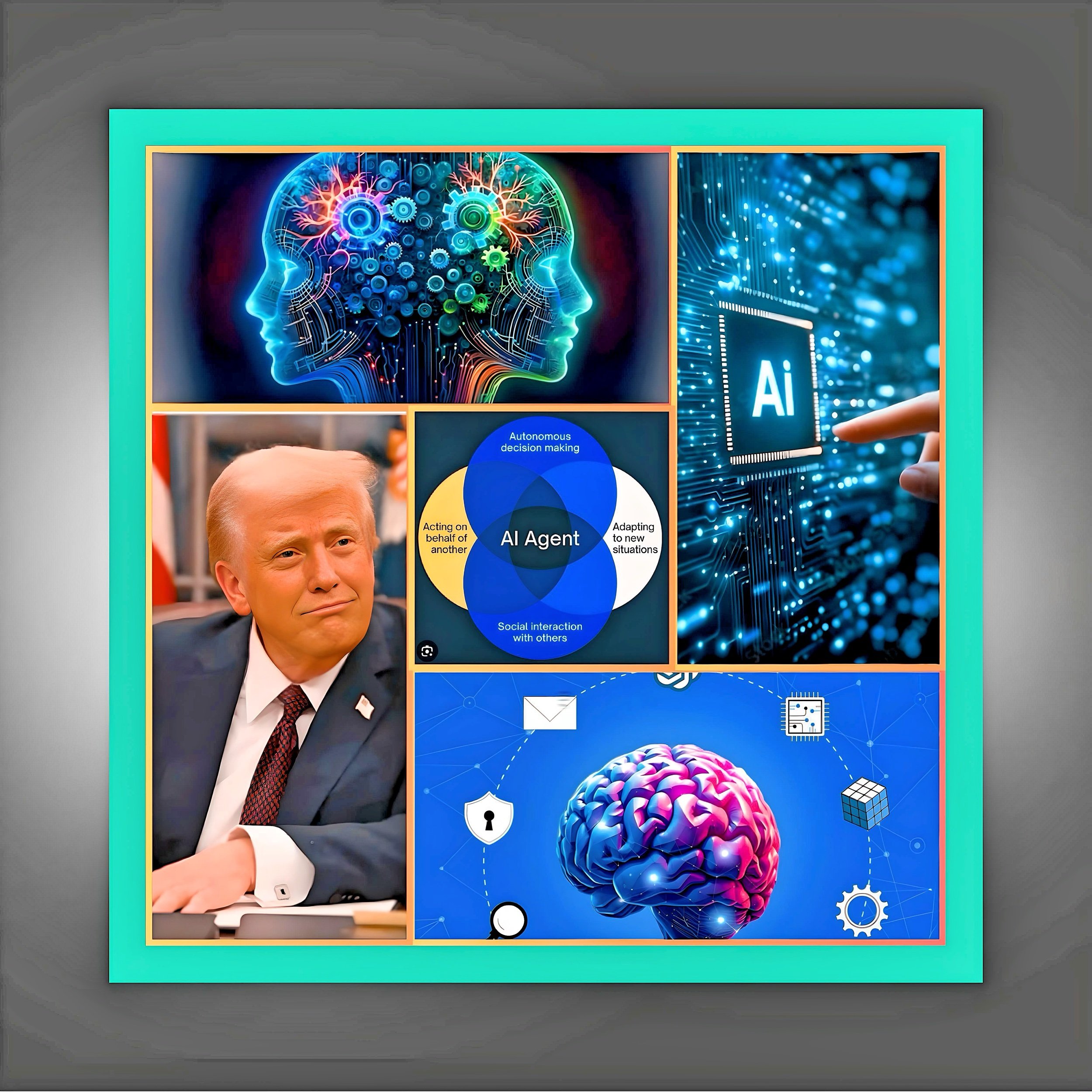American AI Is High on Its Own Supply: Why Efficiency Remains Elusive in the Tech Industry
Introduction
The U.S. technology industry stands at a paradoxical juncture. Despite breakthroughs in cost-efficient AI development models—exemplified by Chinese startup DeepSeek’s open-source innovations—American tech giants continue to escalate investments in artificial intelligence infrastructure, with projected capital expenditures exceeding $300 billion in 2025 alone.
This spending surge persists even as studies reveal that only 26% of companies derive tangible value from AI adoption, and public trust in the technology declines.
The disconnect stems from misapplied economic theories, self-reinforcing competitive dynamics among industry leaders, and geopolitical posturing framed as a “Sputnik moment” for AI supremacy.
While efficiency-driven alternatives gain traction globally, the U.S. tech sector remains locked in a high-stakes Nash equilibrium, prioritizing scale over sustainability and conflating computational brute force with genuine innovation.
The Escalating Scale of U.S. AI Investment
Unprecedented Capital Commitments
The “Magnificent Seven” tech firms—Amazon, Alphabet, Meta, Microsoft, Apple, Nvidia, and Tesla—are projected to collectively spend over $450 billion on AI infrastructure in 2025, surpassing the U.S. federal government’s entire R&D budget.
Microsoft alone plans $80 billion for AI data centers through mid-2025, while Amazon’s $100 billion outlay aims to dominate cloud-based AI services.
These figures represent a 300% increase from 2023 levels, driven by executives’ belief that cheaper AI tools will unlock exponential demand through Jevon Paradox dynamics.
The Efficiency Paradox: DeepSeek’s Disruption
Chinese firm DeepSeek has demonstrated that advanced AI models can be developed at 5% of the cost of U.S. equivalents, utilizing older Nvidia H800 GPUs and algorithmic optimizations like mixture-of-experts architectures.
Their R1 model, built for under $6 million, rivals OpenAI’s $100 million GPT-4 in reasoning tasks while consuming 80% less energy.
This exposes a critical blind spot in U.S. strategy: the assumption that computational scale correlates linearly with capability.
DeepSeek’s open-source approach and hardware frugality challenge the premise that AI leadership requires proprietary models and cutting-edge chips.
Short-Term Incentives vs. Long-Term Sustainability
Quarterly earnings reports reveal the immediate logic behind the spending spiral. Microsoft’s Azure AI revenue grew 900% year-over-year to $5 billion in 2024, while Alphabet’s AI-powered cloud services added $8 billion in new revenue.
These gains create a self-fulfilling prophecy: each dollar invested in AI infrastructure generates measurable returns, incentivizing further expenditure despite systemic risks.
However, this myopic focus ignores parallels to historical bubbles—from 19th-century railway manias to dot-com excess—where incumbents doubled down on obsolete paradigms until disruptive entrants reshaped markets.
The Misapplication of Jevons Paradox
From Coal to Compute: A Flawed Analogy
Tech leaders like Microsoft CEO Satya Nadella invoke 19th-century economist William Stanley Jevons to justify spending: just as efficient steam engines increased coal demand, they argue cheaper AI will spur insatiable demand for computing resources.
This interpretation overlooks key contextual differences. Jevons observed efficiency gains in a mature industrial economy with inelastic energy demand. In contrast, AI adoption remains nascent and uneven—56% of Fortune 500 companies now list AI as a material risk factor due to implementation challenges.
The Limits of Elasticity in AI Markets
While the Jevons Paradox assumes perfect market elasticity, AI adoption faces structural barriers that are absent in coal markets. A Boston Consulting Group study found that 74% of enterprises struggle operationalizing AI due to data quality issues, regulatory uncertainty, and workforce skill gaps.
Unlike coal—a fungible commodity—AI value depends on bespoke integration with legacy systems, creating friction that efficiency gains alone cannot overcome. Furthermore, energy costs (40% of AI operational expenses) introduce price floors that constrain unlimited expansion, unlike 19th-century Britain’s abundant coal reserves.
Regulatory and Ethical Counterpressures
Public skepticism compounds these challenges. According to a 2024 Pew survey, 63% of U.S. consumers distrust AI decision-making in critical domains like healthcare and criminal justice.
This has prompted 28 states to enact AI governance laws, fragmenting compliance landscapes. Tech firms respond by lobbying against regulations while spending billions on public relations campaigns—costs that further inflate budgets without addressing core efficiency deficits.
The Nash Equilibrium of AI Hyperinvestment
Mutual Reinforcement Among Tech Titans
The major players operate in a classic prisoner’s dilemma. For Google, AI defends its $280 billion search ad business against disruptors; Microsoft views Azure AI as critical to cloud dominance; Meta bets on AI-driven content moderation to reduce regulatory risks.
Their interdependence creates perverse incentives: Amazon’s AI spending boosts demand for Microsoft’s cloud services, which fuels Alphabet’s infrastructure sales—a circular economy divorced from end-user value creation.
The “Good Enough” Innovation Blindspot
History shows that incumbents often dismiss efficient alternatives until disruption becomes irreversible. Kodak shelved digital photography to protect film revenues; Blockbuster rejected streaming as “inferior” to DVD rentals. U.S. tech giants now risk repeating this pattern by dismissing DeepSeek-style models as “low-end” innovations.
Yet open-source AI frameworks like DeepSeek-R1 already power 12% of China’s industrial automation upgrades at 20% of Western costs, demonstrating viable alternatives to proprietary systems.
Shareholder Pressures and Short-Termism
Institutional investors exacerbate the problem. Despite diminishing returns, BlackRock and Vanguard—which own 15% of major tech stocks—publicly endorse AI spending as a growth signal. Microsoft’s 2024 $80 billion AI outlay represented 140% of its net income, yet analysts praised the “visionary” spend.
This creates a feedback loop: companies fear stock penalties if they reduce investments, even as ROI metrics deteriorate.
Geopolitics and the Myth of AI Exceptionalism
The Sputnik Narrative Reborn
U.S. policymakers frame AI dominance as a national security imperative, invoking Cold War rhetoric. The 2025 National AI Strategy mandates “total technological leadership” through public-private partnerships, while export controls aim to block China’s access to advanced chips.
This political environment incentivizes firms to align spending with government priorities—Amazon’s $2 billion bid for Pentagon cloud contracts directly influenced its 2025 AI budget increases.
The Cost of Decoupling
Export restrictions have unintended consequences. While limiting China’s access to Nvidia’s H100 GPUs, they spurred Chinese innovation in energy-efficient algorithms—DeepSeek’s models use 30% fewer transistors than U.S. equivalents through ternary quantization techniques.
Meanwhile, Gulf states and Southeast Asian nations increasingly partner with Chinese firms for AI infrastructure, eroding U.S. market share.
Workforce and Opportunity Costs
The AI spending surge crowds out other innovations. Google’s “20% time”—once a hallmark of its culture—has been primarily discontinued to focus engineers on AI projects.
This myopia risks repeating Microsoft’s 2000s “Lost Decade,” when overinvestment in Windows stifled mobile and cloud innovations.
Pathways to Sustainable AI Development
Embracing the “Good Enough” Revolution
DeepSeek’s success demonstrates that performant AI does not need to rely on exascale computing. Their R1 model combines three efficiency strategies:
Open-Source Collaboration: Leveraging global developer communities to refine models, reducing R&D costs by 60%
Algorithmic Frugality: Mixed-precision training and dynamic neural networks cut energy use by 40%
Targeted Applications: Focusing on high-ROI industrial use cases rather than AGI moonshots
U.S. firms could adopt similar principles through consortiums like the AI Alliance, pooling resources on shared infrastructure.
Regulatory Rebalancing
Policies must shift from subsidizing compute farms to incentivizing efficiency. A proposed “AI Energy Intensity Tax” would penalize models exceeding carbon thresholds, while R&D credits could reward parameter-efficient architectures.
The EU’s upcoming AI Efficiency Directive offers a template requiring L1/L2 energy ratings for retail store AI systems.
Redefining Success Metrics
Investors and boards should prioritize the following
Energy per Inference (EPI): Watts consumed per AI decision
Economic Value Density (EVD): Revenue generated per teraflop
Adoption Elasticity: User growth relative to cost reductions
Meta’s Llama 3 already shows promise—its 70 billion parameter model achieves GPT-4 level performance at 35% lower EPI, signaling that efficiency gains are attainable.
Conclusion
Breaking the Cycle
The U.S. tech industry’s AI quagmire stems from conflating computational scale with progress, misapplying historical economic models, and succumbing to geopolitical groupthink.
Yet precedents exist for course correction: IBM’s 1990s shift from mainframes to services preserved its relevance; Apple’s iPhone succeeded by optimizing existing technologies rather than chasing specs.
For AI, the path forward requires embracing efficiency not as a constraint but as a catalyst for innovation.
This demands courageous leadership—one firm must break ranks, as Tesla did by open-sourcing patents in 2014.
By reallocating 30% of AI budgets to sustainable R&D, forming global efficiency consortia, and lobbying for smart regulations, U.S. tech can transition from a high-cost arms race to a high-value ecosystem. The alternative—a $10 trillion spend chasing speculative AGI—risks economic stagnation and ceding the future to pragmatic innovators abroad.






